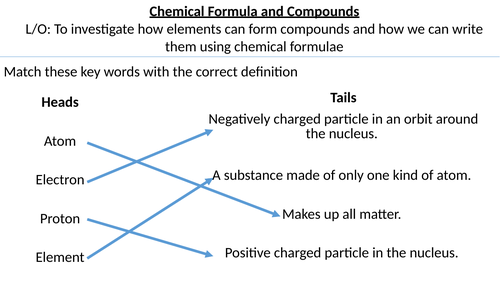
This is the second lesson in a unit of work about atoms, elements and compounds. It is aimed towards KS3 but could be adapted for other levels. This lesson focuses on the difference between molecules of elements and compounds and compounds and their constituent elements.
*The practical in this lesson requires pupils to use bunsen burners.
During this lesson pupils will:
- Recap the structure of an atom from last lesson
- Define what a molecules is.
- Define what a compound is.
- Identify atoms, molecules of elements and molecules of compounds from particle diagrams. Copy and label.
- Use the periodic table to identify if a substance is an element or compound.
- Investigate the difference between water, hydrogen and water and chlorine, sodium and salt.
- Identify that the properties of compounds are different than the elements that make them up.
- Conduct practicals to create iron oxide and copper sulfide.
- Watch teacher demonstration of making magnesium oxide.
- Complete short knowledge consolidation activity.
Please visit my shop for other lessons in this unit and other science, history and geography lessons.
Something went wrong, please try again later.
This resource hasn't been reviewed yet
To ensure quality for our reviews, only customers who have purchased this resource can review it
Report this resourceto let us know if it violates our terms and conditions.
Our customer service team will review your report and will be in touch.
